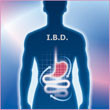Biosimilars represent a viable alternative for the treatment of chronic and degenerative diseases of many patients worldwide who cannot afford the costs of biotherapies based on originator products. Trastuzumab is a humanized monoclonal antibody, which is used for the treatment of HER2-positive breast cancer. In the review paper of Miranda-Hernández et al. [1], the authors described the development of a trastuzumab biocomparable by Mexico-based Probiomed. This biocomparable, according to the authors, was developed in compliance with international guidelines and the characterization of Critical Quality Attributes (CQAs), as well as the pharmacokinetic parameters evaluated in healthy volunteers, demonstrated comparability with the reference product.
The characterization of the trastuzumab biocomparable was based on a state-of-the-art analytical platform. This included chromatographic, electrophoretic, spectroscopic and calorimetric techniques. It also included biological assays intended to evaluate such physicochemical properties that could influence the pharmacological behaviour of the trastuzumab biocomparable. These relevant properties were regarded as CQAs. Evaluation of these CQAs allows a reduction in the uncertainty on safety (immunogenicity) and efficacy (pharmacokinetics and pharmacodynamics), according to Miranda-Hernández et al.
The physicochemical comparability of such CQAs, according to the review, was reported that trastuzumab-Probiomed exhibited the same primary structure compared to the reference product, with 99.5% of sequence coverage in light and heavy chains and highly similar exact masses with respect to the theoretical mass. The authors claimed that comparability of the higher order structure between trastuzumab-Probiomed and the reference product was confirmed by overlaying the circular dichroism spectra of both the near and far UV regions. Fluorescence life-time (t) values were within the same order of magnitude and corresponding transition temperatures demonstrated equivalent thermostability. Charge and glycan heterogeneities evaluated by orthogonal techniques (CZE, cIEF and CEX) reported comparable contents of acidic, basic and main isoforms between the two products, while the analysis of glycoforms relevant for pharmacokinetics, pharmacodynamics and immunogenicity reported comparable profiles. The purity degree measured as the relative monomer content with respect to the aggregates and truncated forms by SE-UPLC and CGE-NR reported that both products exhibited a similar degree of purity. Lastly, in vitro functionality assays reported that the averaged relative affinity to HER2 of trastuzumab-Probiomed was 97.7% with respect to the reference product. While the biocomparable also reported comparable affinity to FcgRIIIa (Ka) and dissociation to FcRn (KD) constants and the same potency to deplete HER2-positive cells compared to the reference product.
Once physicochemical and biological comparability was determined, a randomized, double-blind, two-arm, prospective, pharmacokinetic study was conducted in healthy volunteers. According to the review. the Wilcoxon-Mann-Whitney U test reported that the differences between the pharmacokinetic parameters (Cmax, MRT, AUC0-∞) of trastuzumab-Probiomed and the reference product were not significant.
The results summarized in the review reported that the current state-of-the-art methodologies allow the precise determination of the degree of physicochemical and functional comparability between a biocomparable and its reference product. The authors conclude that as part of a ‘totality-of-evidence’ scheme this will diminish the uncertainty about the safety and efficacy of biocomparables and should be taken into account when determining the extent of non-clinical and clinical studies required for registration.
Conflict of interest
The authors of the research paper are employees of Probiomed, which is developing, manufacturing and marketing biocomparables.
Abstracted by Emilio Medina-Rivero. Principal Scientist, Department of Analytical Development. R & D, Probiomed, Cruce de Carreteras Acatzingo-Zumpahuacán s/n, Tenancingo, Mexico.
Editor’s comment
It should be noted that ‘biocomparables’ approved in Mexico might not have been authorized following as strict a regulatory process as is required for approval of biosimilars in the European Union. The EMA (European Medicines Agency) regulatory requirements ensure the same high standards of quality, safety and efficacy for biosimilars as for originator biologicals, and also include a rigorous comparability exercise with the reference product.
Readers interested to learn more about biosimilars are invited to visit www.gabi-journal.net to view the following manuscript published in GaBI Journal:
Biosimilars for prescribers
Readers interested in contributing a research or perspective paper to GaBI Journal – an independent, peer reviewed academic journal – please send us your submission here.
Related articles
Trastuzumab non-originator biological approved in Russia
Call for compulsory license for biosimilar trastuzumab emtansine
Reference
1. Miranda-Hernández MP, López-Morales CA, Piña-Lara N, et al. Pharmacokinetic comparability of a biosimilar trastuzumab anticipated from its physicochemical and biological characterization. Biomed Res Int. 2015;2015:874916. doi:10.1155/2015/874916. Epub 2015 Nov 19.
Permission granted to reproduce for personal and non-commercial use only. All other reproduction, copy or reprinting of all or part of any ‘Content’ found on this website is strictly prohibited without the prior consent of the publisher. Contact the publisher to obtain permission before redistributing.
Copyright – Unless otherwise stated all contents of this website are © 2016 Pro Pharma Communications International. All Rights Reserved.








 0
0











Post your comment